彈簧
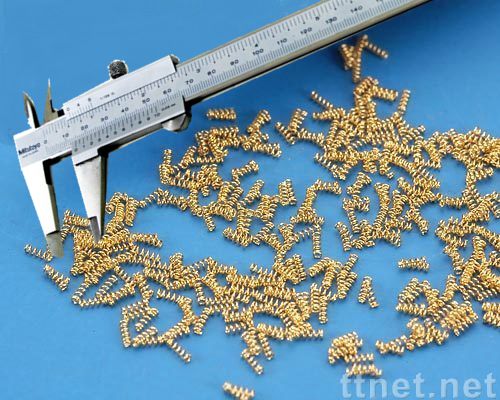 彈簧彈簧是一種具有彈性的金屬或非金屬製成的彎曲結構,其廣泛應用於各個領域,從工業製造到日常生活中的許多產品都離不開彈簧的應用。本文將探討彈簧的發展歷程、不同類型的彈簧以及它們在各個領域中的應用。
彈簧彈簧是一種具有彈性的金屬或非金屬製成的彎曲結構,其廣泛應用於各個領域,從工業製造到日常生活中的許多產品都離不開彈簧的應用。本文將探討彈簧的發展歷程、不同類型的彈簧以及它們在各個領域中的應用。
一、 彈簧的歷史發展
彈簧的歷史可以追溯到古代,人類早期就開始利用彈簧的彈性特性製作工具和武器。然而,真正的彈簧技術開始於工業革命時期,隨著對機械運動的需求不斷增加,人們開始尋求更精密和可靠的彈簧技術。
十九世紀是彈簧技術迅速發展的時期,許多重要的發明和創新都促進了彈簧產業的增長。其中最重要的是彈簧鋼的發明,這使得彈簧的製造更加可靠和經濟。隨著工業化的進程,彈簧的應用範圍不斷擴大,從機械裝置到交通運輸,彈簧已經成為現代工業中不可或缺的一部分。
二、 彈簧的類型
壓縮彈簧:壓縮彈簧是最常見的一種彈簧類型,它通常是一根線圈狀的彈簧,當外力作用於彈簧時,它會壓縮並儲存彈性能量。
拉伸彈簧:拉伸彈簧與壓縮彈簧相反,它是一根拉伸的彈簧,在外力作用下會拉長並儲存彈性能量。
扭轉彈簧:扭轉彈簧是以扭轉方式工作的彈簧,常見於各種機械裝置和機械儀表中。
三、 彈簧的應用
汽車工業:彈簧在汽車工業中有著廣泛的應用,從懸吊系統到煞車系統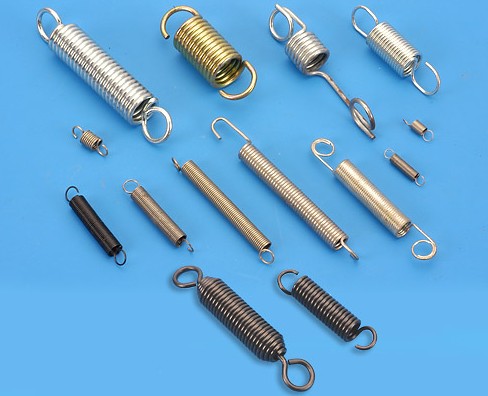 彈簧,彈簧都扮演著重要的角色。例如,彈簧懸吊系統可以提供車輛的平穩性和舒適性,而煞車彈簧則用於碟煞車和鼓煞車系統中,保證煞車效果的穩定性和可靠性。
彈簧,彈簧都扮演著重要的角色。例如,彈簧懸吊系統可以提供車輛的平穩性和舒適性,而煞車彈簧則用於碟煞車和鼓煞車系統中,保證煞車效果的穩定性和可靠性。
工業製造:在工業製造中,彈簧被用於各種機械裝置和設備中,例如機械壓力計、閥門、鎖具等。這些彈簧通常用於提供力量、恢復形狀或調整壓力。
家用電器:在家用電器中,彈簧也有著廣泛的應用,例如洗衣機、冰箱、微波爐等。彈簧可以用於門的開合、按鈕的彈起、托盤的推出等功能。
醫療器械:在醫療器械中,彈簧被用於各種醫療設備和工具中,例如手術器械、呼吸器、人工心臟等。這些彈簧可以用於提供力量、調整壓力或實現特定的運動。
結語:
彈簧作為一種具有彈性的結構,其在現代社會中有著廣泛的應用。隨著科技的不斷進步和工業的不斷發展,彈簧技術也在不斷創新和改進,為各個領域提供了更可靠、更高效的解決方案。我們相信,在未來的發展中,彈簧將會發揮更加重要的作用,為人類的生活帶來更多的便利和安全。
四、 彈簧的科學原理與製造技術
彈簧的科學原理:彈簧的彈性是由於材料的變形能力和恢復力所致。當外力作用於彈簧上時,彈簧會發生變形,而彈性材料的分子結構能夠在外力消失後恢復原狀,這就是彈簧所具有的彈性。彈簧的彈性特性通常由材料的彈性模量、彈簧的幾何形狀和尺寸等因素決定。
彈簧的製造技術:彈簧的製造技術包括材料的選擇、成型和加工等過程。常見的彈簧材料包括彈簧鋼、不鏽鋼、鋁合金等,每種材料都具有不同的彈性特性和適用範圍。彈簧的成型通常包括線圈彎曲、拉伸或扭轉等操作,而加工過程則包括表面處理、熱處理等,以提高彈簧的強度和耐久性。
五、 彈簧的未來發展趨勢
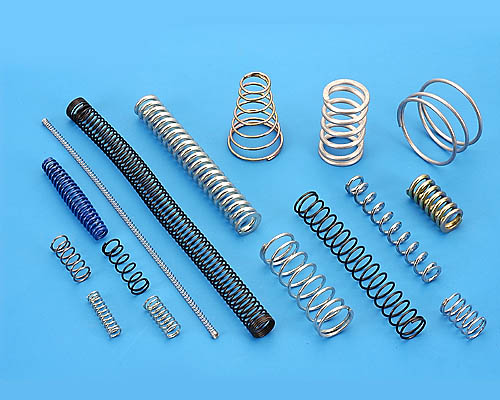 彈簧
彈簧
高性能材料:隨著材料科學和製造技術的不斷進步,未來彈簧材料將朝著高性能化、輕量化和多功能化的方向發展,以滿足各種特殊應用的需求。
智能化應用:隨著物聯網和人工智能技術的發展,未來彈簧可能被應用於智能化設備和系統中,例如智能懸吊系統、智能彈簧測量裝置等,以提高系統的性能和效率。
綠色製造:在環保意識不斷提升的情況下,未來彈簧製造將更加注重環保和可持續性,例如開發新型綠色材料、優化製造工藝等,以減少對環境的影響。
六、 結語
彈簧作為一種具有廣泛應用的彈性結構,在現代工業和生活中扮演著不可替代的角色。通過不斷的技術創新和應用拓展,彈簧將繼續為人類的生活帶來更多的便利和安全。我們期待未來彈簧技術的持續發展,為全球的工業和科技進步做出更大的貢獻。
七、彈簧的特殊應用領域
高科技產業:在航空航天、電子設備等高科技領域,彈簧的需求非常特殊。例如,在太空探索中,彈簧被用於控制器的彈性元件,以及太陽能電池板的展開機構。而在微型電子設備中,彈簧也被用於微型開關、接觸點等部件。
運動與體育器材:彈簧在運動器材中也有著廣泛應用,例如彈簧床、運動彈簧座椅、健身器材等。這些器材通常利用彈簧的彈性特性提供運動者更好的彈跳、支撐或阻尼效果,以提高運動表現和保護運動者的安全。
音響設備:在音響設備中,彈簧被用於喇叭的懸掛結構,以及震動樞紐等部件。這些彈簧可以有效減震、隔音,提高音響設備的音質和穩定性。
音樂樂器:彈簧也被廣泛應用於各種樂器中,例如吉他、鋼琴、小提琴等。在吉他中,彈簧被用於琴弦的固定和調整,而在鋼琴中,彈簧被用於鍵盤的機構和踏板的彈性支撐,以實現不同音調和音量的控制。
宇宙航行:彈簧在宇宙航行中扮演著關鍵角色,例如在火箭發射過程中,彈簧被用於推進器的分離機構,以確保火箭的正常運行和安全返回。
八、彈簧的挑戰與未來發展
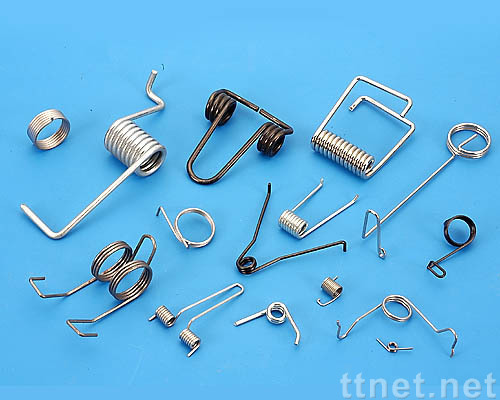 彈簧
彈簧
材料創新:彈簧的性能和應用受限於材料的特性,因此材料創新是彈簧行業面臨的重要挑戰之一。未來彈簧材料可能會更加注重高強度、高耐久性、輕量化和可回收性等方面的特性。
製造技術:隨著彈簧應用領域的不斷擴展,對彈簧製造技術提出了更高的要求。未來彈簧製造技術可能會更加注重精密化、自動化和智能化,以提高生產效率和產品質量。
環保和可持續發展:彈簧製造過程中產生的廢棄物和污染對環境造成了一定的影響,未來彈簧行業可能會更加注重環保和可持續發展,開發綠色製造技術和材料,降低對環境的負面影響。
總結:隨著科技的不斷進步和社會的不斷發展,彈簧作為一種具有廣泛應用的彈性結構,在各個領域都有著重要的地位和作用。未來彈簧行業將面臨更多的挑戰和機遇,我們期待彈簧技術在不斷創新和發展中,為人類的生活帶來更多的便利和安全。
九、 彈簧的專業應用及研究領域
高精度儀器:在科學實驗室和工業生產中,需要高精度測量和控制的場合,彈簧被應用於各種精密儀器和設備中,如天平、壓力儀表、微型機械裝置等。彈簧的穩定性和可靠性對這些儀器的性能至關重要。
軍事和防務:在軍事裝備和防務系統中,彈簧被廣泛應用於武器、戰車、飛機等各種設備中。例如,彈簧可用於火炮的炮彈彈簧、坦克的懸吊系統、飛機的起落架等,以提高裝備的穩定性和耐久性。
能源技術:在能源領域,彈簧被應用於各種新能源技術中,例如太陽能發電系統、風力發電系統等。彈簧可以用於調節太陽能板和風車的角度和位置,以最大程度地利用太陽能和風能資源。
生物醫學工程:在生物醫學工程領域,彈簧被應用於各種醫療設備和人工器官中,例如人工關節、心臟起搏器、輔助行走器等。彈簧可以用於提供力量、調節運動軌跡、穩定運動等功能,以改善患者的生活質量。
災害救援和搜救:在災害救援和搜救任務中,彈簧被應用於各種救援設備和工具中,如救生艇、救生背包、燈塔浮標等。彈簧可以用於提供浮力、支撐結構、儲存能量等,以提高救援效率和成功率。
十、 彈簧的社會影響及價值
促進產業發展:彈簧作為一種基礎性的工業零部件,在各個產業中都有著廣泛的應用,促進了產業的發展和經濟的增長。
提高生活品質:彈簧的應用使得許多產品和設備具有更好的性能和功能,提高了人們的生活品質和工作效率。
保障安全和可靠性:彈簧的穩定性和可靠性對許多關鍵設備和系統的安全運行具有重要意義,保障了社會的安全和穩定。
推動科技創新:彈簧行業的不斷創新和技術進步推動了科技的發展和應用,為人類的進步和未來的發展提供了重要支持。
總結:彈簧作為一種基礎性的材料和結構,在現代社會中發揮著不可替代的作用。通過不斷的技術創新和應用拓展,彈簧將繼續為人類的生活和工作帶來更多的便利和安全。
十一、 彈簧的文化意義與象徵
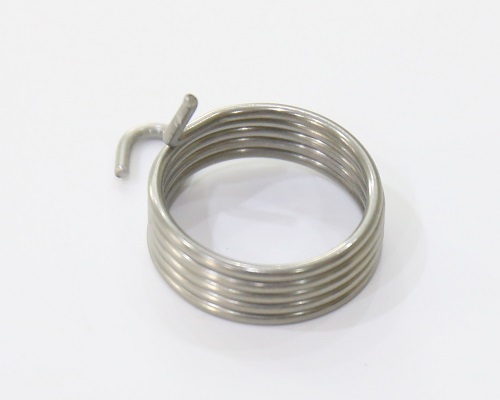 彈簧
彈簧
藝術創作:彈簧的彈性和靈活性為藝術家提供了豐富的創作靈感。許多藝術作品中都可以看到彈簧的身影,例如雕塑、裝置藝術、現代舞蹈等,這些作品通常利用彈簧的動態特性和形狀變化來表現藝術家的創意和想象力。
象徵自由和靈活性:彈簧具有彈性和靈活性的特性,常常被用來象徵自由、靈活和多樣性。例如,彈簧在音樂中常被用來表現節奏感和音樂的流動性,而在文學和詩歌中,彈簧則常被用來象徵生命的起伏和變化。
活力和創新:彈簧的彈性特性也被用來象徵活力和創新。許多企業和品牌都將彈簧作為標誌,以表達對創新和靈活性的追求,例如彈簧床品牌、彈簧運動鞋品牌等。
精神力量:彈簧的彈性和韌性使其成為人們克服困難和挑戰的象徵。在面對逆境和挫折時,人們常常用彈簧來比喻堅韌不拔、不屈不撓的精神力量,激勵自己勇往直前。
十二、 彈簧的保養和安全注意事項
定期檢查:彈簧在使用過程中可能會出現磨損或變形,因此應定期檢查彈簧的狀況,確保其正常運行。
清潔保濕:彈簧的表面應保持清潔和保濕,以防止銹蝕和氧化,延長彈簧的使用壽命。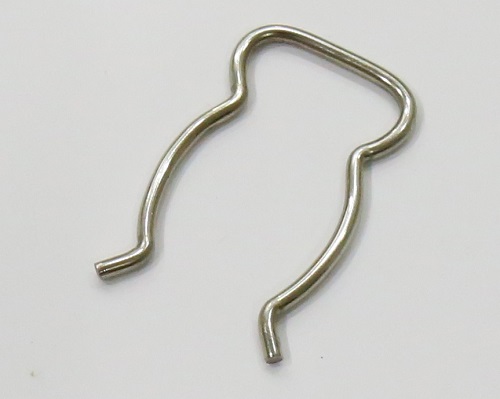 彈簧
彈簧
適當使用:彈簧應按照設計要求和使用說明書的要求正確使用,避免超載或不當使用造成損壞。
安全使用:彈簧在使用過程中可能會產生彈出和反彈的情況,因此應注意安全,避免彈簧對人身和財物造成損害。
總結:彈簧不僅是一種實用的工業零部件,還具有豐富的文化意義和象徵意義。通過正確的保養和安全使用,彈簧將繼續為人們的生活和工作帶來便利和安全。
Spring is an elastic curved structure made of metal or non-metal. It is widely used in various fields, from industrial manufacturing to many products in daily life, which are inseparable from the application of spring. This article will explore the evolution of springs, the different types of springs and their applications in various fields.
1. Historical development of springs
The history of springs can be traced back to ancient times. Human beings began to use the elastic properties of springs to make tools and weapons in the early days. However, real spring technology began during the Industrial Revolution. As the demand for mechanical movement continued to increase, people began to seek more precise and reliable spring technology.
The nineteenth century was a period of rapid development of spring technology. Many important inventions and innovations promoted the growth of the spring industry. The most important of these was the invention of spring steel, which made the manufacture of springs more reliable and economical. With the process of industrialization, the application scope of springs continues to expand. From mechanical devices to transportation, springs have become an indispensable part of modern industry.
2. Type of spring
Compression spring: Compression spring is the most common type of spring. It is usually a coil-shaped spring. When external force acts on the spring, it compresses and stores elastic energy.
Tension spring: A tension spring is the opposite of a compression spring. It is a tension spring that elongates and stores elastic energy under the action of external forces.
Torsion spring: A torsion spring is a spring that works in a torsional manner and is commonly found in various mechanical devices and mechanical instruments.
3. Application of springs
Automobile industry: Springs are widely used in the automobile industry. From suspension systems to braking system springs, springs play an important role. For example, spring suspension systems can provide vehicle stability and comfort, while brake springs are used in disc brakes and drum brake systems to ensure the stability and reliability of the braking effect.
Industrial manufacturing: In industrial manufacturing, springs are used in various mechanical devices and equipment, such as mechanical pressure gauges, valves, locks, etc. These springs are typically used to provide strength, restore shape, or adjust pressure.
Household appliances: Spring is also widely used in household appliances, such as washing machines, refrigerators, microwave ovens, etc. Spring can be used for functions such as opening and closing doors, popping up buttons, and pushing out trays.
Medical Devices: In medical devices, springs are used in various medical equipment and tools, such as surgical instruments, respirators, artificial hearts, etc. These springs can be used to provide force, adjust pressure, or achieve specific movements.
Conclusion:
As an elastic structure, spring is widely used in modern society. With the continuous advancement of science and technology and the continuous development of industry, spring technology is also constantly innovating and improving, providing more reliable and efficient solutions for various fields. We believe that in the future development, springs will play a more important role and bring more convenience and safety to human life.
4. The scientific principles and manufacturing technology of springs
The scientific principle of springs: The elasticity of springs is due to the deformation ability and restoring force of the material. When an external force acts on the spring, the spring will deform, and the molecular structure of the elastic material can return to its original shape after the external force disappears. This is the elasticity of the spring. The elastic properties of a spring are usually determined by factors such as the elastic modulus of the material, the geometry and size of the spring.
Spring manufacturing technology: Spring manufacturing technology includes material selection, molding and processing. Common spring materials include spring steel, stainless steel, aluminum alloy, etc. Each material has different elastic properties and application range. The forming of springs usually includes operations such as coil bending, stretching or twisting, while the processing process includes surface treatment, heat treatment, etc. to improve the strength and durability of the spring.
5. The future development trend of springs
spring
High-performance materials: With the continuous advancement of materials science and manufacturing technology, spring materials will develop in the direction of high performance, lightweight and multi-functional in the future to meet the needs of various special applications.
Intelligent applications: With the development of Internet of Things and artificial intelligence technology, springs may be used in intelligent equipment and systems in the future, such as intelligent suspension systems, intelligent spring measurement devices, etc., to improve system performance and efficiency.
Green manufacturing: With the increasing awareness of environmental protection, future spring manufacturing will pay more attention to environmental protection and sustainability, such as developing new green materials, optimizing manufacturing processes, etc., to reduce the impact on the environment.
6. Conclusion
As an elastic structure with wide applications, spring plays an irreplaceable role in modern industry and life. Through continuous technological innovation and application expansion, springs will continue to bring more convenience and safety to human life. We look forward to the continued development of spring technology in the future and making greater contributions to global industrial and technological progress.
7. Special application fields of springs
High-tech industry: In high-tech fields such as aerospace and electronic equipment, springs have very special needs. For example, in space exploration, springs are used in the elastic elements of controllers and in the deployment mechanisms of solar panels. In micro electronic devices, springs are also used in components such as micro switches and contact points.
Sports and sports equipment: Springs are also widely used in sports equipment, such as spring beds, sports spring seats, fitness equipment, etc. These equipment usually use the elastic properties of springs to provide athletes with better bounce, support or damping effects to improve sports performance and protect athletes' safety.
Audio equipment: In audio equipment, springs are used in the suspension structure of speakers, as well as components such as vibration hubs. These springs can effectively absorb shock, sound insulation, and improve the sound quality and stability of audio equipment.
Musical instruments: Springs are also widely used in various musical instruments, such as guitars, pianos, violins, etc. In the guitar, springs are used for the fixation and adjustment of the strings, while in the piano, the springs are used for the elastic support of the keyboard mechanism and pedals to achieve different tone and volume control.
Space navigation: Spring plays a key role in space navigation. For example, during rocket launch, springs are used in the separation mechanism of the propeller to ensure the normal operation and safe return of the rocket.
8. Spring challenges and future development
spring
Material innovation: The performance and application of springs are limited by the characteristics of the material, so material innovation is one of the important challenges facing the spring industry. In the future, spring materials may pay more attention to characteristics such as high strength, high durability, lightweight and recyclability.
Manufacturing technology: With the continuous expansion of spring application fields, higher requirements have been put forward for spring manufacturing technology. In the future, spring manufacturing technology may focus more on precision, automation and intelligence to improve production efficiency and product quality.
Environmental protection and sustainable development: The waste and pollution generated during the spring manufacturing process have a certain impact on the environment. In the future, the spring industry may pay more attention to environmental protection and sustainable development, develop green manufacturing technologies and materials, and reduce the negative impact on the environment. .
Summary: With the continuous advancement of science and technology and the continuous development of society, springs, as a widely used elastic structure, play an important position and role in various fields. The spring industry will face more challenges and opportunities in the future. We look forward to the continuous innovation and development of spring technology to bring more convenience and safety to human life.
9. Professional applications and research fields of springs
High-precision instruments: In scientific laboratories and industrial production, where high-precision measurement and control are required, springs are used in various precision instruments and equipment, such as balances, pressure instruments, micro-mechanical devices, etc. Spring stability and reliability are critical to the performance of these instruments.
Military and defense: In military equipment and defense systems, springs are widely used in weapons, tanks, aircraft and other equipment. For example, springs can be used in artillery shell springs, tank suspension systems, aircraft landing gear, etc. to improve the stability and durability of equipment.
Energy technology: In the energy field, springs are used in various new energy technologies, such as solar power generation systems, wind power generation systems, etc. Springs can be used to adjust the angle and position of solar panels and windmills to maximize the use of solar and wind energy resources.
Biomedical Engineering: In the field of biomedical engineering, springs are used in various medical equipment and artificial organs, such as artificial joints, pacemakers, assisted walking devices, etc. Spring can be used to provide strength, adjust movement trajectory, stabilize movement and other functions to improve patients' quality of life.
Disaster rescue and search and rescue: In disaster rescue and search and rescue missions, springs are used in various rescue equipment and tools, such as lifeboats, survival backpacks, lighthouse buoys, etc. Spring can be used to provide buoyancy, support structure, store energy, etc. to improve rescue efficiency and success rate.
10. Social impact and value of springs
Promote industrial development: As a basic industrial component, springs are widely used in various industries, promoting industrial development and economic growth.
Improve the quality of life: The application of springs enables many products and equipment to have better performance and functions, improving people's quality of life and work efficiency.
Ensure safety and reliability: The stability and reliability of springs are of great significance to the safe operation of many key equipment and systems, ensuring the safety and stability of society.
Promote scientific and technological innovation: The continuous innovation and technological progress of the spring industry promote the development and application of science and technology, providing important support for human progress and future development.
Summary: As a basic material and structure, spring plays an irreplaceable role in modern society. Through continuous technological innovation and application expansion, springs will continue to bring more convenience and safety to human life and work.
11. The cultural significance and symbol of springs
spring
Artistic creation: The elasticity and flexibility of springs provide artists with rich creative inspiration. Spring can be seen in many works of art, such as sculpture, installation art, modern dance, etc. These works usually use the dynamic characteristics and shape changes of springs to express the artist's creativity and imagination.
Symbolizing freedom and flexibility: Spring has the characteristics of elasticity and flexibility and is often used to symbolize freedom, flexibility and diversity. For example, springs are often used in music to express rhythm and the fluidity of music, while in literature and poetry, springs are often used to symbolize the ups and downs and changes of life.
Vitality and Innovation: The elastic properties of springs are also used to symbolize vitality and innovation. Many companies and brands use springs as their logo to express their pursuit of innovation and flexibility, such as spring bed brands, spring sports shoe brands, etc.
Spiritual Strength: The elasticity and toughness of the spring make it a symbol of people overcoming difficulties and challenges. When facing adversity and setbacks, people often use springs as a metaphor for perseverance and indomitable spiritual strength to inspire themselves to move forward.
12. Spring maintenance and safety precautions
Regular Inspections: Springs may become worn or deformed during use, so the condition of the springs should be checked regularly to ensure they are functioning properly.
Clean and moisturize: The surface of the spring should be kept clean and moisturized to prevent rust and oxidation and extend the service life of the spring. spring
Proper use: Spring should be used correctly in accordance with the design requirements and instructions for use to avoid damage caused by overloading or improper use.
Safe use: The spring may pop up and rebound during use, so you should pay attention to safety to avoid damage to people and property caused by the spring.
Summary: Spring is not only a practical industrial component, but also has rich cultural and symbolic significance. With correct maintenance and safe use, springs will continue to bring convenience and safety to people's lives and work.
